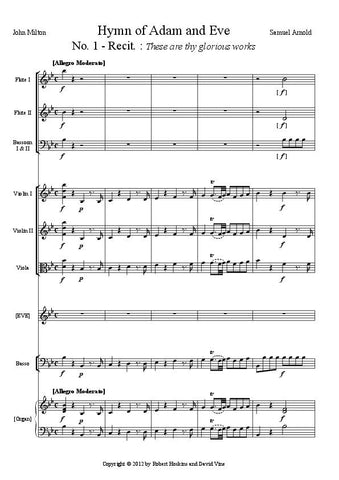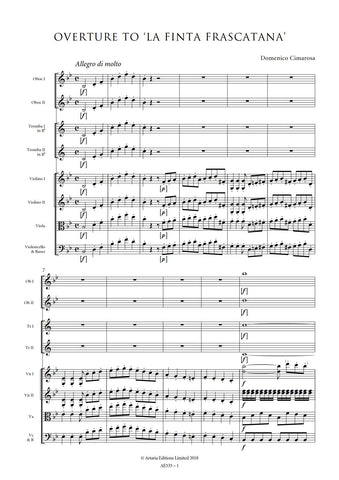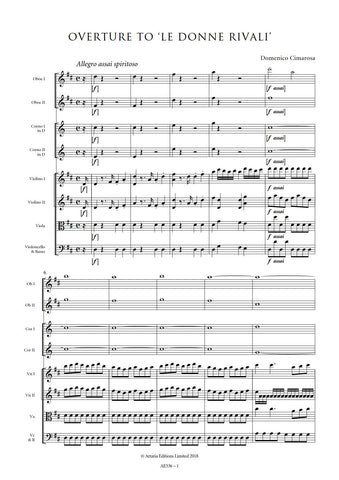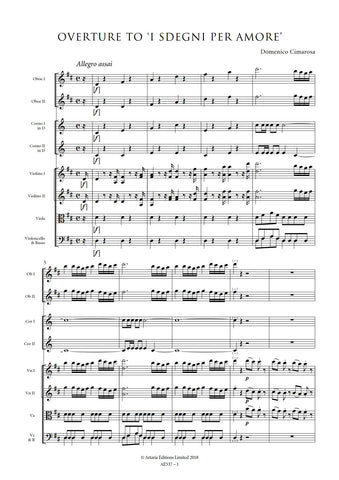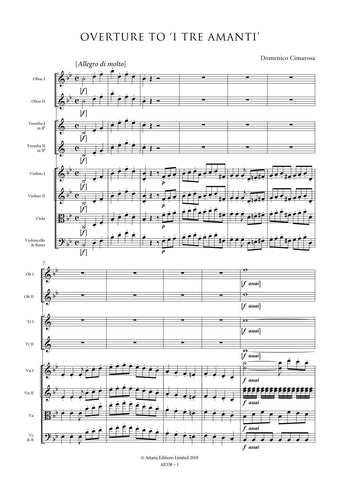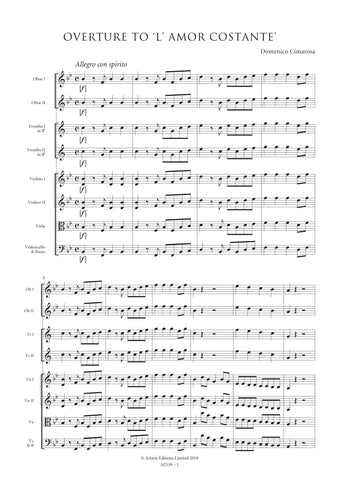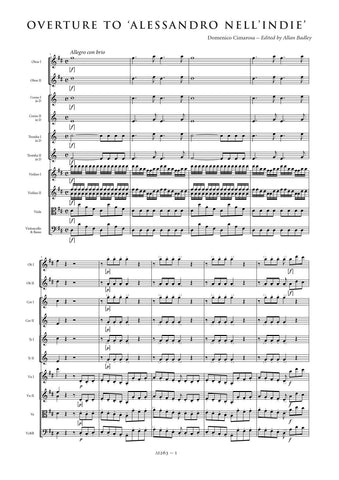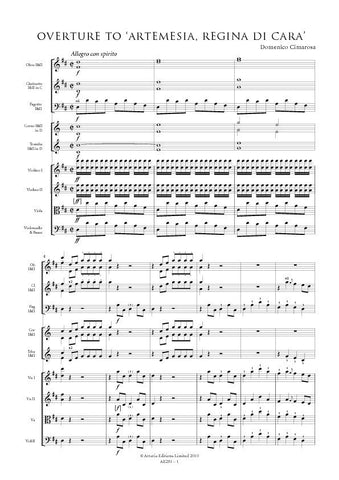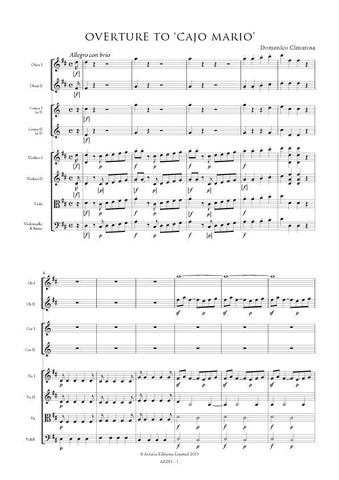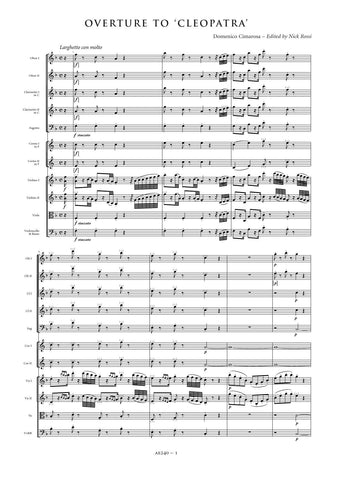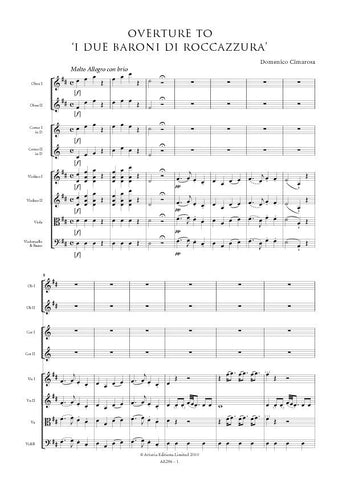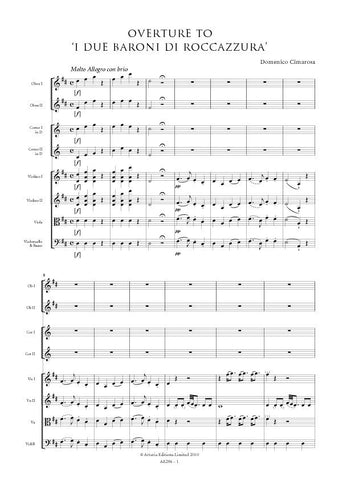Overtures by Domenico Cimarosa
During his career, Domenico Cimarosa probably composed about 70 operas. Except in very rare cases, Cimarosa prepared an introductory overture for all his works.
Cimarosa uses two musical structures in all of his overtures: the three-movement and the one-movement forms, the second often being introduced by a short lento section. Very rarely does Cimarosa also use a two-movement structure that is only a simplification of the three-movement cycle. The three-movement overtures, typical of the Neapolitan operatic tradition, and whose origin goes back to Alessandro Scarlatti, consist of a rapid first movement which Cimarosa introduces thematic episodes made up of quick rhythmical elements, generally assigned to the first violins (the second violins typically double this at the lower octave or play broken chord accompaniment patterns similar to an Alberti bass). The violas double the bassline (consisting of the violoncellos and double basses) at the octave or, on occasion, double the first violin part at the lower octave.
from $217.00



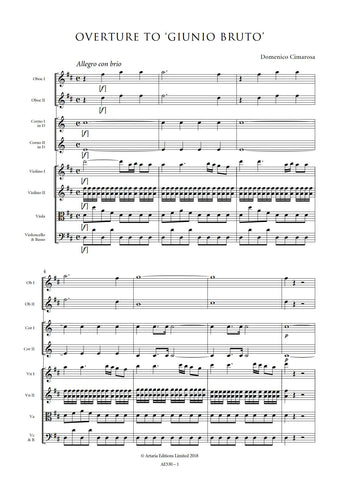

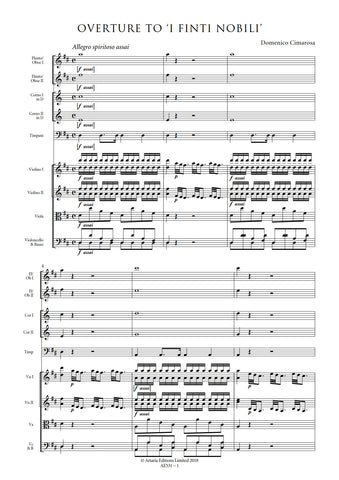
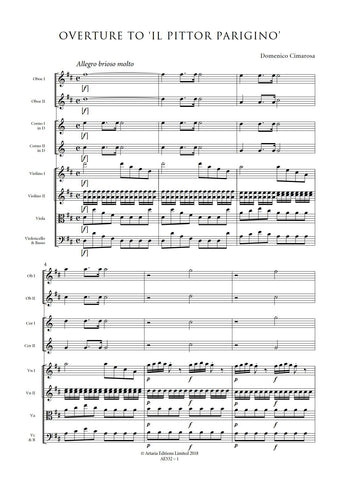
![Cimarosa, Domenico: Overture to 'L' Amante Combattuto Dalle Donne Di Punto' [La Biondolina] (AE533)](http://www.artaria.com/cdn/shop/products/AE533_Score_A4_1stpage_78d51045-9895-457a-a944-82c72858e560_large.jpg?v=1571438579)
